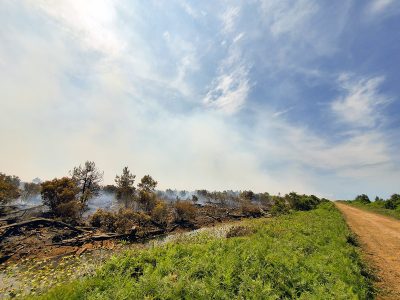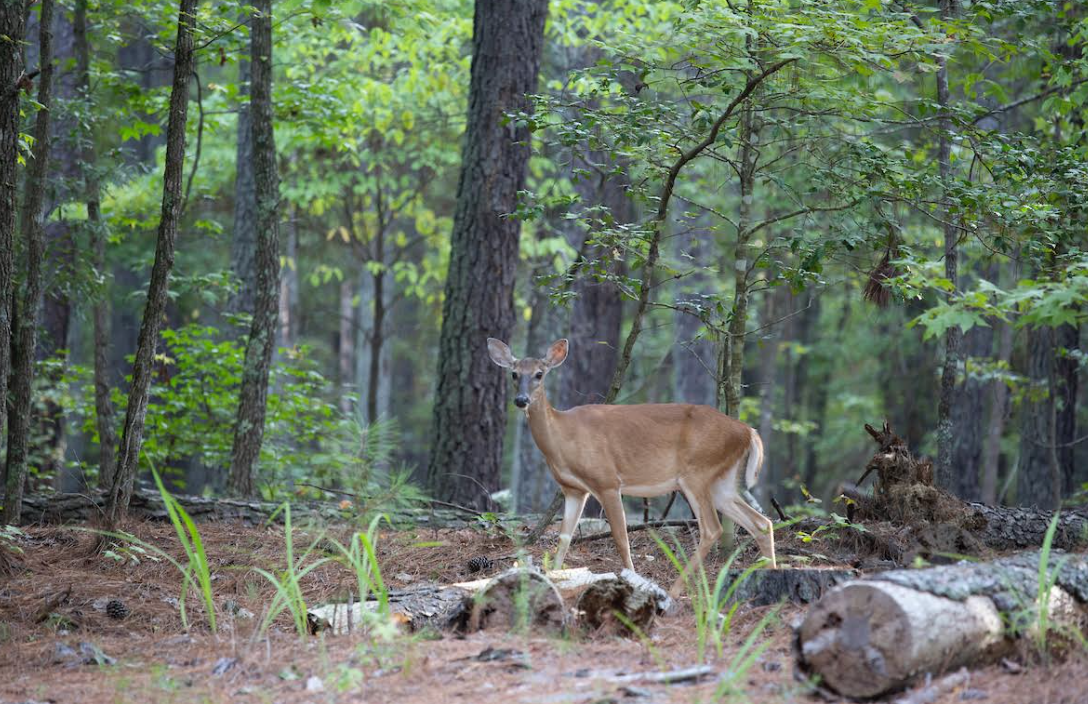
“Smoke and fire is no longer a concern,” Philip Jackson, North Carolina Forest Service spokesman, said in an interview Monday. “Barring an unforeseen circumstance, we’re pretty confident we’ll be sending most people home.”
Since the fire was reported on June 19 on private land adjacent to Pocosin Lakes National Wildlife Refuge in Hyde County, firefighters with the N.C. Forest Service and the U.S. Fish and Wildlife Service installed about 40 pumps, built about 25 temporary earthen dams, plugged numerous culverts, and set up gigantic sprinklers.
Supporter Spotlight
“They moved that water into the fire area and allowed that to sit for a couple of days and really soak it up,” Jackson said.
All told, 162.42 million gallons were pumped from Lake Phelps and 539.78 million gallons were pumped from New Lake, flooding the fire, which ultimately burned 1,938 acres, with a total of 702.2 million gallons. And then the skies opened, dumping a total of about 6 inches of rain over the last week or so.
“That’s exactly what we needed,” Jackson said, “and exactly when we needed it.”
A total of 91 firefighters had worked on crews, most of them from the Forest Service.
“We inundated the peat soil to bolster the natural water that was there,” Kenny Griffin, deputy incident commander with the Forest Service, said in an interview Tuesday. “We were bringing water from the bottom and water from the top that the Good Lord helped us out with.”
Supporter Spotlight
Most of the water from the lakes was pumped into canals that crisscross the land, and pumped from the canals to the fire. The dams, created onsite by excavators, were helping the water reach the fire. “Basically, we were trying to float water uphill, Griffin said.
Fortuitously, the most recent rainstorm came through at “dusky dark,” he said, when the conditions allowed the rain to fall easier and over a wider area than when it is dumped in a deluge.
“That’s what really helps it soak into the wood and into the soil,” Griffin explained. “Instead of running off, it’s absorbed.”
Another nice effect of the rain was that it helped refill the lakes.
To determine whether the fire was extinguished, a drone equipped with infrared flew over the area last night to look for hot spots, he said. Only a single small heat signature was detected.
“It was in a good spot and in an area we’re not concerned about,” Griffin said.
Ground crews planned to follow up with a ground investigation at the location.
Meanwhile, firefighters are in the process of removing the pumps, dams and culvert plugs to restore the natural hydrology and will soon turn the incident back to the local Fairfield District team.
The Forest Service is currently assessing damages and will develop a repair plan to restore any collateral damage to the roads. The foliage that burned was a combination of shrub pocosin, which can burn intensely, and some trees, mostly loblolly and pond pines, “and other waxy pocosin fuels.” No one was injured. Total costs of the operation are still being calculated, Griffin said.
The Forest Service is “99%” sure that the fire was started by lightning, but it is still being investigated, Jackson said. It was located on Carolina Ranch, a 15,000-acre private site that includes a carbon farming operation. Much of the soil in the region is composed of rich black peat soil, or pocosin, which has recently been recognized for its value in sequestering carbon. Intensive work has been done at Carolina Ranch and neighboring Pocosin Lakes refuge to restore the natural bogginess in the soil, which had lost much of its moisture over the decades.
Angie Tooley, Carolina Ranch manager and project director, said Tuesday that as part of the process to earn carbon offsets, the ranch in February had engineered 10,000 of the site’s 15,000 acres to hold 9 feet of water. As Tooley described it, it was like creating a tub and putting a plug in it. Consequently, most of the site’s peat was spongy and wet, in turn making it much less of a wildfire hazard.
Although it’s not yet clear how much of the peat may have been lost in the fire, Tooley said, she believes that it was minimal.
“It looks like it was just the vegetation and the layer of organic soils,” she said. Since fresh water from the two lakes was not delivered to the fire until eight days after it started, Tooley said, it is self-evident that the wet peat went a long way in control of the fire.
“We are in awe that what we set out to prove was proved,” she said. “That is, by holding fresh water in a pocosin, land will deter and suppress fire.”
Peat fires can be difficult to extinguish, especially in dry conditions. Wildfires in 2008 and 2011 plagued the region for months, spreading and smoldering underground, with winds frequently pushing smoke into communities throughout the northeast corner of the state.
Lessons have been learned from those fires, Griffin said, such as keeping it contained with aggressive amounts of water. Although the peat is not as dry as it was in 2008 and 2011, the State Climate Office has deemed conditions in the region “abnormally dry,” just short of a drought.
“The combination of our pumping operation and the rain prevented this one from becoming a longer duration fire,” Griffin said.







